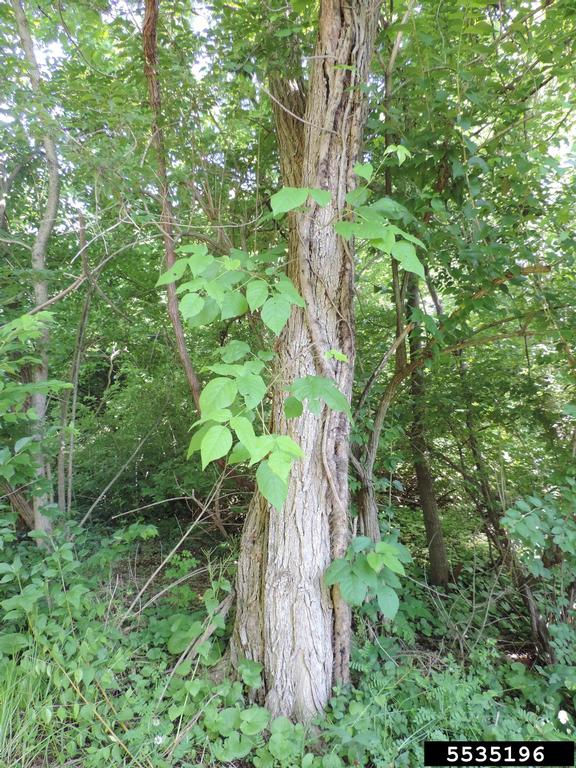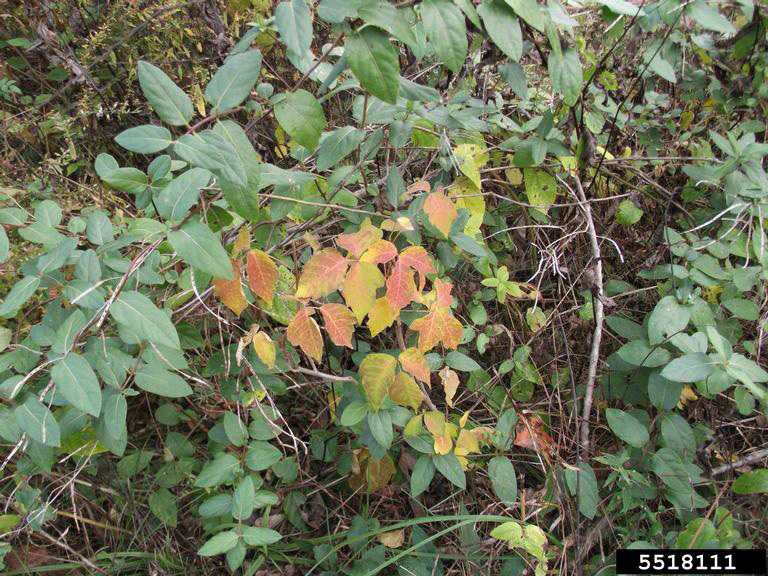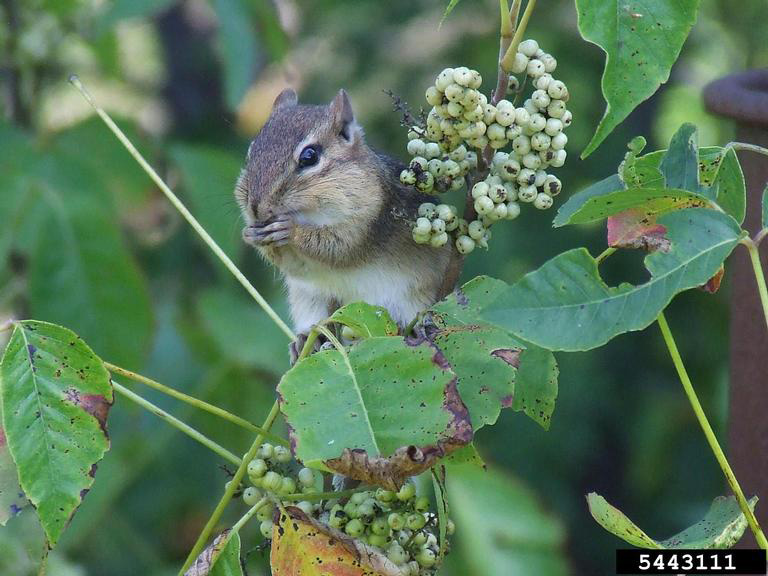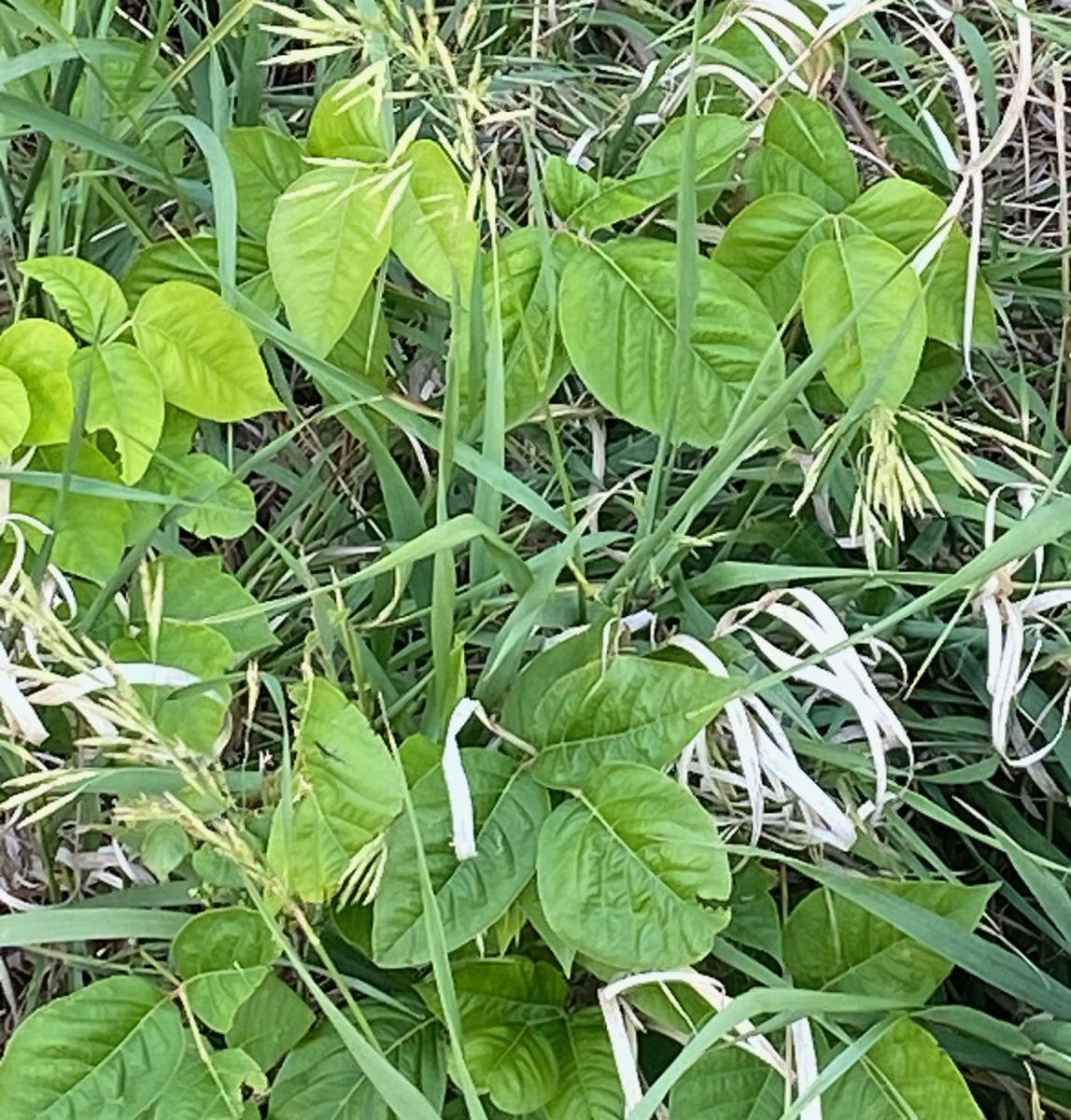
“Leaves of three, let it be!” Remember this rule of thumb to protect yourself from an itchy poison ivy rash this summer! Plants look innocent enough at this point in the season, but handling them is a mistake. All parts of a poison ivy plant – leaves, stems, roots, fruits – contain an oil called urushiol which causes an allergic reaction and rash. The rash can appear within hours of exposure or up to several days later. Sensitivity to urushiol builds up over time, making a once “immune” person susceptible.
 Identification
Identification
“Leaves of three…” is not technically accurate because poison ivy plants,Toxicodendron radicans, have compound leaves and each individual leaf is made up of three smaller parts or leaflets. So, you’re looking for plants with clusters of three leaflets together - two side leaflets and a slightly larger leaflet at the tip.
Poison ivy plants appear in several forms, including 1) small individual shoots in grass or other undergrowth, 2) low growing shrubs or 3) woody vines growing up trees. Vines become quite thick and woody, with many hair-like dark brown aerial roots attaching the vine to the tree or other structure.
 Their medium to dark green leaves are also quite variable in shape and may have smooth, scalloped or notched teeth on the edges. In fall, poison ivy foliage turns a beautiful red, orange or yellow making plants easy to spot.
Their medium to dark green leaves are also quite variable in shape and may have smooth, scalloped or notched teeth on the edges. In fall, poison ivy foliage turns a beautiful red, orange or yellow making plants easy to spot.
Clusters of small cream to yellow-green flowers later develop into greenish-white berries, about the size of small currants. Birds and other wildlife eat the berries and spread seeds in their droppings.
Poison ivy grows from woody rhizomes – spreading underground roots – making control more difficult. The root system must be killed for permanent control which is why systemic herbicides are recommended for control and multiple applications may be needed to kill the woody root system.
Look A-likes
- Virginia creeper, Parthenocissus quinquefolia – woody vine common in urban landscapes with 5-part palmate leaflets.
- Boston ivy, Parthenocissus tricuspidata – another woody vine common in urban landscapes, often found growing up the side of a home. Older plants have a 3-lobed leaf and are usually a glossy dark green. Younger plants or those growing from the base of the main stem may have leaves made up of three completely separated leaflets, very similar in appearance to poison ivy.
 Control
Control
When working with poison ivy always protect yourself by wearing chemical resistant gloves, long sleeved shirt, long pants, shoes and socks.
The quickest way to eliminate poison ivy is to spot treat individual plants with triclopyr, a selective broadleaf herbicide which can be found in products labeled as poison ivy, clover or brush killers. Triclopyr will not damage lawns when used according to label directions. It can be applied anytime during the growing season, but woody perennial weeds like poison ivy are killed most effectively from applications made from mid-September through late October. Plants must still have foliage to take in contact herbicides.
Use a sprayer and thoroughly wet the foliage with the herbicide. Avoid soaking the soil or allowing herbicide to drift or splash onto non-target plants. Some products contain a foaming red marker, making it easy to see where you've sprayed.
In addition to triclopyr, the non-selective herbicide glyphosate (RoundUp) is also effective but should be used carefully to minimize damage to turfgrass or other desirable ornamental plants.
Once the plants have died - again wearing protective clothing - remove the plant(s) and cut the root. Use safety precautions when handling dead poison ivy. Even dead plants contain active toxins.
Plant debris should be bagged and disposed of in the trash. Or pit compost plant debris by digging a deep hole and burying plants where they will not be disturbed or seeds able to germinate.
- Don’t burn dead plant material as toxins can become airborne and be inhaled.
- Don’t add plant debris to a compost pile.
- Don’t leave plant debris where children, pets or livestock have access to it.
Urushiol is not soluble in water alone, so if you’ve been exposed to plants, wash your skin as soon as possible with a strong alkali soap or wipe your skin with alcohol to remove the oil
- Pretty fall color of poison ivy. Image by Richard Gardner, Bugwood.org.
- Eastern Chipmunk eating the newly ripened berries of poison ivy. Image by Gary B. Bell, Bugwood.org.
- Poison ivy plants in grass. Client image used with permission.